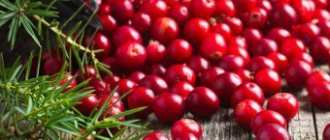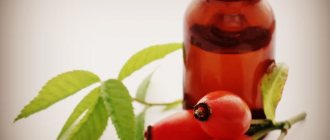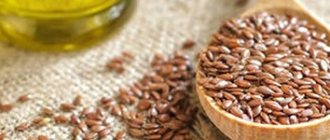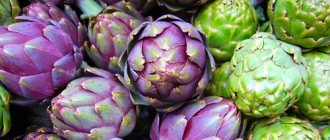© LMproduction – stock.adobe.com
Share:
Pumpkin is a healthy and tasty vegetable that is eaten in a wide variety of forms. Thanks to its chemical composition, pumpkin is extremely popular among those who are on a diet or simply stick to proper nutrition, and for athletes this vegetable is a godsend. Pumpkin pulp is quickly digestible, which allows you to eat it at almost any time of the day. However, this melon crop also has contraindications for use.
In the article we will look at who can eat pumpkin and who is strictly not recommended, and find out what useful substances this melon crop is rich in.
Nutritional value and composition of pumpkin
The composition of pumpkin pulp and its nutritional value depend on the specific plant variety. But no matter what variety you choose, it will always be healthy and nutritious.
Pumpkin is 90% water. This is a big plus for those who watch their figure. But nevertheless, it contains a huge amount of nutrients and microelements. Let's find out the composition of this storehouse of vitamins. Below is a table that shows all the nutritional properties and chemical composition of the vegetable crop (the table shows values per 100 g of classic food pumpkin):
| Nutrients | Quantity in product (per 100 g) |
| Squirrels | 1 g |
| Fats | 0.1 g |
| Carbohydrates | 4.4 g |
| Alimentary fiber | 2 g |
| Water | 90.8 g |
| Starch | 0.2 g |
| Ash | 0.6 g |
| Mono- and disaccharides | 4.2 g |
| Organic acids | 0.1 g |
| Vitamin A | 250 mcg |
| Vitamins PP | 0.5 mg |
| Beta carotene | 1.5 mg |
| Vitamin B1 | 0.05 mg |
| Vitamin B2 | 0.06 mg |
| Vitamin B5 | 0.4 mg |
| Vitamin B6 | 1.6 mg |
| Vitamin B9 | 14 mcg |
| Vitamin C | 8 mg |
| Vitamin E | 0.4 mg |
| Calcium | 25 mg |
| Magnesium | 14 mg |
| Sodium | 4 mg |
| Potassium | 204 mg |
| Phosphorus | 25 mg |
| Chlorine | 19 mg |
| Sulfur | 18 mg |
| Iron | 0.4 mg |
| Zinc | 0.24 mg |
| Iodine | 1 mcg |
| Copper | 180 mcg |
| Manganese | 0.04 mg |
| Cobalt | 1 mcg |
| Fluorine | 86 mcg |
As you can see from the table, there are a lot of useful things in the vegetable. As for the calorie content of pumpkin, it all depends on how it was prepared. For example, boiled pumpkin has 20 kcal, baked pumpkin has a little more - 22 kcal. Calorie content directly depends on what is added to the pumpkin. If you want to pour honey on the vegetable or sprinkle it with sugar, its energy value can increase to 50 kcal per 100 g.
Pumpkin is a universal product, and this allows you to eat it in the morning, afternoon and evening.
You need to choose a good and tasty pumpkin. When buying a vegetable, give preference to dense and fleshy varieties of bright orange color: these are the fruits that will be tasty and sweet. Pale varieties are forage varieties. Such vegetables have an inexpressive taste. Do not buy pumpkins that have dents or cracks: the shell of the vegetable has already been damaged, which means the process of rotting may begin inside.
© bozhdb – stock.adobe.com
Description
Pumpkin is a representative of plants belonging to the pumpkin family. Pumpkin can be annual or perennial. The leaves of the pumpkin are large, hairy or hard-rough, its branches are creeping or clinging. During flowering, the plant is covered with large white or yellow flowers. The pumpkin fruit is large, often reaching a large size: from 2 to 9 kg.
Pumpkin is a tasty and healthy vegetable. First and second courses, jam, and juice are prepared from it. All parts of the plant are used in folk medicine. The seeds are a well-known remedy against worms; the pulp has a choleretic and diuretic effect. Pumpkin maintains health and replenishes the lack of vitamins and minerals.
Benefits of pumpkin for humans
Pumpkin is especially useful for the female body. A large amount of vitamin E has a beneficial effect on skin, nails and hair. Gynecologists recommend eating autumn vegetables to increase the chances of pregnancy, since vitamin E is involved in the formation of new healthy cells. But for those who have already experienced menopause, pumpkin will be a good antidepressant that will help get rid of unpleasant feelings during this period.
Pumpkin retains its beneficial properties after baking, boiling or steaming.
Not only the pulp of the pumpkin is edible, but also the seeds. They are high in magnesium, zinc and protein. But the energy value of the seeds is much greater than that of the pulp. 100 g of seeds contain 556 kcal, so they should be introduced into your diet carefully. For example, they make oil that can be added to salads; in this form, this product will be more beneficial.
Many men are also interested in the benefits of pumpkin. The stronger sex should pay attention to the seeds, since they contain a lot of zinc, and it is he who is involved in the production of testosterone. Regular consumption of pumpkin seeds protects men from prostatitis. Men should also drink pumpkin juice, as it is very restorative. This is a great option to refresh yourself after a hard workout.
The benefits of pumpkin for the human body are as follows:
- It has a diuretic effect (you remember that it is 90% water), which helps people who suffer from kidney problems. Raw pumpkin is recommended for use by people with kidney failure, as well as for the prevention of tuberculosis.
- Since pumpkin is a strong antioxidant, it is useful in preventing any pathogenic processes at the cellular level.
- For those who are obese or struggling with excess weight, pumpkin is a real godsend, as it helps digest foods faster.
- With constant consumption of pumpkin pulp, blood pressure normalizes. For people who play sports (active fat-burning workouts, which lead to increased blood pressure, are especially popular now), a few pieces of pulp will help normalize blood pressure levels.
- Although pumpkin does not have much vitamin A, it also has a beneficial effect on vision.
- Pumpkin is high in vitamin C, which supports the immune system. With the onset of autumn, try to eat vegetables as often as possible - you will get sick less.
Scientists have noticed that regular consumption of this autumn beauty normalizes sleep, so those who suffer from insomnia should definitely introduce pumpkin into their diet.
This melon crop has a good effect on the gastrointestinal tract (gastrointestinal tract). Therefore, people who suffer from constipation are recommended to make themselves a paste from fresh pumpkin. This treat is eaten for breakfast and better on an empty stomach. You shouldn’t worry about stomach discomfort; there won’t be any, since pumpkin is easily and quickly digested (it doesn’t matter whether it has been heat-treated or not). Also, raw pumpkin will benefit those who have liver problems - only in this case it is better to eat it for lunch or dinner.
Human health is a complex mechanism that needs to be carefully monitored, and pumpkin is an excellent assistant in this matter. If this vegetable is constantly in your diet, your well-being will improve, and your systems and organs will function without failure.
Since pumpkin is a gift of autumn, it does not grow all year round. But it can be prepared, for example, by freezing it in pieces or placing it whole in a cold and dark cellar. Pumpkin has excellent shelf life and the ability to be transported over long distances.
Why is pumpkin good for our body?
Yes to everyone. Due to the large number of useful substances and vitamins in its composition, it is sometimes even called a natural pharmacy. Judge for yourself.
“Pumpkin contains many substances that are beneficial for the body,” says Olga Avchinnikova. — If we talk about minerals, then these are calcium, magnesium, phosphorus, zinc, iron. Pumpkin, like potatoes, has a lot of potassium. It is good for the heart and helps normalize blood pressure. Of the vitamins, pumpkin is especially rich in vitamin A. Firstly, it is important for skin health, and with its deficiency, dry skin and hair, acne, brittle nails are observed, and secondly, this vitamin is necessary for vision. Indeed, with a severe lack of vitamin A, so-called night blindness can occur - impaired vision in the dark. This vitamin is also important for the normal functioning of the immune system and reducing susceptibility to infectious diseases. Pumpkin also contains substances such as lutein and zeaxanthin, which play an important role in the prevention of eye diseases. They have a beneficial effect on visual acuity and retinal health.
Beneficial properties during strength training
People involved in strength training will benefit most from pumpkin seeds. For athletes, they will be healthier than pulp, since the seeds contain the maximum vitamin E content, and it reduces the likelihood of injury to muscle tissue during exercise (this is especially true for people who lift a lot of weight in the gym).
For those who engage in heavy sports, pumpkin seeds will help “build” and not lose muscle mass. This is possible thanks to vitamins E and C. During intense exercise, muscles can tear (many people call this “soreness”, but in fact muscle pain means that the fibers are torn), this is normal if the athlete has intense or strength training. But it is important that the fibers recover quickly and well. This is where vitamins C and E come to the rescue, promoting rapid recovery. Vitamin E is responsible for elasticity and helps muscles stretch well and “heal” properly after exercise. Eating pumpkin pulp and seeds keeps the body in good shape and prevents the muscles from “rusting” and stagnating. Men are recommended to eat a glass of seeds a day for a month, then take a break for the same period.
© amy_lv – stock.adobe.com
Only raw seeds are considered beneficial. If they are fried, there will be no benefit from them, only extra calories. Proper consumption of seeds will be beneficial, despite the high calorie content, since a lot of strength and energy is spent during exercise.
Women who are involved in bodybuilding, on the contrary, should give preference to pumpkin pulp, since it does not have such a high calorie content (the female body, unfortunately, absorbs the excess faster).
In addition to having a positive effect on human muscles, pumpkin is often used in weight loss, especially by women. This issue is worth understanding in more detail.
Pumpkin for the gallbladder
Pumpkin has a mild choleretic effect and improves the fluidity of bile. After a hearty feast or for prevention, take advantage of the healing properties of the fruit and prepare medicines based on it.
- Take 500 g of raw pulp and pass through a meat grinder.
- Add olive or sunflower oil to the resulting porridge - 100 g. and 2 tablespoons of warty birch buds.
- Leave for a week and take 3 times a day, 2 tablespoons before meals.
Pumpkin oil
Pumpkin oil is made by cold pressing the seeds. Due to the high concentration of active ingredients, the product is considered homeopathic and is sold in pharmacies. It contains several essential acids and valuable substances.
- Phytosterols. Reduce the risk of developing cancer.
- Flavonoids. A group of antioxidants that strengthen the immune system and have an antimicrobial effect.
- Phospholipids. They have a positive effect on the skin condition with eczema and psoriasis.
- Tocopherols. Protect tissues at the cellular level.
- Carotenoids. Slow down aging, help strengthen bone tissue, teeth, stimulate the production of visual pigment in the retina.
Benefits for weight loss
For weight loss and cleansing the body, pumpkin is an indispensable product. Girls in pursuit of a slim figure choose a variety of methods, and pumpkin diets are no exception. However, the best diet is proper nutrition. Only a properly structured diet and physical activity will help achieve good results.
If you decide to use pumpkin in your diet at the weight loss stage, give preference to dishes made from fresh vegetables. For example, fresh salads and cold cream soups are great options. Pumpkin cocktails and smoothies will be a good source of vitamins after a workout, so take pre-prepared fresh juice with you. In addition to pumpkin, choose your favorite fruits and vegetables.
We have already mentioned earlier that pumpkin has a beneficial effect on the intestines, therefore, at the stage of weight loss, the vegetable is used as a cleansing component, taken on an empty stomach.
The main thing is to remember that with the pumpkin diet you can only drink green tea, pumpkin juice and still water.
© M.studio – stock.adobe.com
If you cannot give up coffee, drink the drink no more than once a day. It is recommended to drink coffee, like tea, without sugar.
But how do you take pumpkin for weight loss? There are a few rules to remember:
- Every day you need to drink a glass (200 ml) of pumpkin juice on an empty stomach, preferably 20 minutes before meals;
- drink a glass of water or green tea before meals throughout the day;
- exclude sweet fruits from the diet during the diet;
- if you feel hungry, eat pumpkin - a few pieces will be enough;
- You can't eat after six in the evening.
For main dishes, choose cereals, such as buckwheat. You should also eat several pieces of vegetables at each meal. As an alternative to the usual dishes, pumpkin soups, stews, etc. are suitable.
The pumpkin diet gives good results, the main thing is to stick to the regime.
Pumpkin for liver cleansing
The liver consists of cells - hepatocytes, which are destroyed by poor diet, alcohol and drug abuse. An important property of pumpkin for the liver is the restoration of destroyed hepatocytes and assistance in cell division.
The pulp cleanses the liver of waste. One fasting day on pumpkin is enough for the liver to return to normal.
500 gr. Grind raw berries, divide into 5-6 servings and consume throughout the day.
Harm and contraindications
For whom the product is contraindicated and should either limit its consumption or completely exclude it from your diet:
- Diabetics. Pumpkin contains a lot of starch; when heated, it breaks down and is better absorbed by the body, so the glycemic index may be higher than that of the raw product. As a result, baked, boiled and steamed pumpkin will increase blood sugar levels. If you have type 2 diabetes, you can only eat raw pumpkin and then in limited quantities.
- People with acute gastrointestinal diseases should also avoid eating pumpkin.
- Those who suffer from gastritis should be careful with seeds: they can only worsen the condition, as they contain salicylic acid, which irritates the mucous membrane.
- During pregnancy, you should avoid eating pumpkin seeds, as they can trigger early labor.
Be careful with pumpkin juice: it can cause nausea and bloating, and in some cases lead to diarrhea. It is better not to drink juice in the evening.
Important! Pumpkin has a choleretic effect, so people with gallbladder problems should be more careful with the vegetable.
Benefit and harm always go hand in hand, walking on a fine line. But one thing is certain: if you eat pumpkin in moderation, then nothing bad will happen.
Recipes for healthy eating
Recipe for cranberry sauce for meat
- 0.7 g Protein
- 0.1 g Fat
- 16.6 g Carbohydrates
- 68.1 kcal
25 min.
- #oranges
- #vegetarian dish
- #dietary
- #cranberry
- #cinnamon
- #low calorie
- #dinner
- #sauce
- #dinner
Other recipes
For whom is pumpkin definitely contraindicated?
Despite all its appeal, some people still need to cross pumpkin off their menu. For example, those who are allergic to this product. People with chronic kidney disease and kidney failure should also be careful. In this case, limiting potassium-rich foods may be recommended. All due to impaired excretion of this mineral by the kidneys.
As for patients with diabetes, you can eat pumpkin. But only if the portion does not exceed 150-200 grams. In this form, it will not have any negative effect, since although it has a high glycemic index, the total amount of carbohydrates per 100 grams is very small - less than 7 grams.
Interesting facts about pumpkin
Pumpkin is not only healthy, but also a very tasty product, which has become firmly established in the diet of many peoples. It is consumed raw, stuffed, baked or fried. Moreover, this product is used not only as food, but also many useful things are made from it. For example, bowls, jugs, candlesticks, hats and much more.
The benefits of pumpkin don't end there. Read the article below for interesting facts about this wonderful product.
- According to botanists, pumpkin is considered a berry, and one of the largest in the world. Its weight can vary from several kilograms to a ton. The largest pumpkin was grown in Belgium, weighing more than 1190 kg.
- There are about 800 varieties of pumpkin in the world, but only 200 of them can be eaten. The most common fruits are orange, yellow and green. They may have external differences: be oblong or round, have spotted or striped colors, and have pimply or smooth skin.
- A whole pumpkin can be stored in a dark place for several weeks. However, cut fruits are stored in the refrigerator for no more than 30 days.
- In one of the cities of Germany (Ludwigsburg) every year in the fall there is a festival dedicated to pumpkin. It presents various varieties of these fruits, beautiful and unusual sculptures, original dishes, jam and much more.
- In Kyrgyzstan, bottles for storing kumiss are made from certain varieties of pumpkin. They keep the drink fresh longer.
- In Africa, locals often use dried pumpkin fruits as motorcycle helmets.
- Mexico is considered the birthplace of pumpkins.
- For Halloween, the Irish came up with the idea of carving scary faces out of pumpkins. They brought the same tradition to America. And then it spread throughout the world.
Water purification
Dried pumpkin peel and seeds are a good water purifier from unnecessary impurities. For effective cleaning, you can add avocado and lemon peels.
In conditions of inaccessibility of high-quality drinking water (during a hike or an extreme situation), you can purify the water in this way by taking dried pumpkin peel with you.
Pumpkin jam
Pumpkin jam attracts with its beautiful amber color, intriguing taste and piquant aroma, which provides the presence of all kinds of spices. This dessert will diversify your diet, fill it with vitamins and other substances important for the body. In addition, with the help of pumpkin jam, this melon can be put to good use during the big harvest season. This delicacy will surely become the most favorite pumpkin dish, which, thanks to many interesting additives, will appeal to all its tasters.
Pumpkin and zucchini jam
Ingredients:
950 g pumpkin, 950 g zucchini, 1700 g sugar, 145 g lemon, 140 g raisins, 180 g dried apricots, 370 ml water.
Preparation:
- We wash the dried fruits.
- Add boiling water and leave them in for 15 minutes.
- Wash the vegetables and remove the skin.
- We extract the seeds from the pumpkin.
- We weigh the peeled vegetables - their mass should be equal to the weight of sugar or a little more if the pumpkin is very sweet.
- Remove the yellow part of the zest from a well-washed citrus. Grate it.
- We clean the lemon from white veins and seeds.
- Grind the pumpkin, zucchini, dried apricots, and lemon in a meat grinder.
- Sprinkle raisins, sugar, chopped zest into the mixture. Stir.
- Warm up slowly, stirring constantly. Boil for 30-50 minutes until thickened. In the process, remove the foam and stir so that the dish does not burn.
- Pour the pumpkin-squash jam into clean, warm jars.
- Let's roll up.
- Place the lids down. Turn over after 15 minutes.
Pumpkin and apple jam
Ingredients:
470 g pumpkin, 310 g sour apples, 440 g sugar, 4 g cinnamon, 580 g water, 120 g walnuts.
Preparation:
- Wash pumpkin and apples.
- We clear them of seeds.
- Cut out the fibrous part of the pumpkin pulp where the seeds are located and remove the peel.
- We cut the prepared products into cubes.
- Cut the peeled nuts into pieces of arbitrary shape.
- Fry without oil for about 7 minutes, stirring occasionally.
- Pour water into the pan and place the pumpkin pieces. With constant heating and stirring, add sugar.
- After boiling, add apples. Boil for half an hour, skimming off the foam.
- Add nuts to the jam and add cinnamon. Boil slowly, stirring, for 20 minutes. Transfer to clean, dried jars.
- Place parchment paper on top, cut to the size of the neck diameter. Store in the cold.
Pumpkin jam with cherry plum
Ingredients:
1070 g pumpkin, 1070 g cherry plum, 1100 g sugar, 180 ml water.
Preparation:
- Wash the pumpkin and cherry plum.
- Cut the skin off the pumpkin and remove the seeds.
- Cut the pulp into cubes.
- We peel the cherry plum from the pits.
- We boil water. Blanch the pumpkin for 10 minutes. Add cherry plum and keep on heating for another 6 minutes.
- Grind the softened ingredients with the broth in a blender or pass through a sieve. While heating slowly, add sugar.
- Stirring constantly, boil for a couple of minutes.
- Pour into sterile, dried jars.
- We seal it hermetically.
- Cool slowly, wrapping it in a blanket and turning it upside down.
Pumpkin jam with orange and lemon
Ingredients:
- Pumpkin – 1 kg
- Lemon - 0.5 pcs.
- Orange - 1 pc.
- Sugar - 800 g
Preparation:
- Cut the pumpkin into cubes, after first cutting off the peel and inner pulp with seeds.
- Sprinkle the prepared pumpkin cubes with granulated sugar.
- Place the container on the fire to simmer. Cook the pumpkin in three batches for 15 minutes. That is, bring to a boil, boil for 15 minutes, let cool, and then boil again and cool.
- After the third stage of cooking, add pieces of chopped lemon and orange to the softened pumpkin. Return to heat and cook for another 10 minutes.
- Place in sterilized jars and seal with lids. Turn the jars over and cover with a blanket until completely cool.
Pumpkin. Benefit and harm. Pumpkin dishes – ZDRAVBUD.NET
Pumpkin Recipes
Pumpkin soup
This soup belongs to the group of so-called second-day dishes, that is, those that become tastier if you let them brew for 24 hours. Very delicate consistency and amazing aroma.
Ingredients:
- Pumpkin – 500 g
- Potatoes - 300 g
- Onion (large) - 1 pc.
- Celery root (optional, added on my own) - 50 g
- Vegetable oil - 1 tbsp. l.
- Milk - 1.5 cups.
- Ginger (fresh or 0.5 tsp ground dry) - 1 tsp.
- Salt (to taste)
- Black pepper (ground to taste)
- Crackers (wheat) - 100 g
Pumpkin soup recipe:
- Prepare food. Wash and peel potatoes, celery and pumpkin; remove seeds from pumpkin. Cut into small cubes. Peel the onion and chop finely.
- Heat the oil in a thick-bottomed saucepan and fry the onion until translucent, about 3-4 minutes.
- Add vegetables to onions.
- Pour boiling water until it just covers them. Add salt to taste and cook over low heat until soft, about 15-20 minutes.
- Drain the broth and blend the vegetables in a blender until smooth.
- Return vegetables to pan.
- Dilute with hot milk to your desired consistency. Warm over medium heat for 5-10 minutes.
- Pepper to taste, add ginger, stir.
Serve hot with wheat croutons. Bon appetit!
Pumpkin in the oven
Ingredients:
- 300 g pumpkin pulp,
- 80 g olives,
- 80 g feta cheese,
- 3 tbsp. chopped oregano leaves,
- olive oil, balsamic vinegar, salt, ground black pepper - to taste.
Preparation:
Cut the pumpkin into cubes, place in a single layer on a baking sheet, drizzle with olive oil and sprinkle with black pepper. Bake in an oven preheated to 180ºC for 30 minutes. Cut the olives into slices, the cheese into cubes, combine all the ingredients and season with balsamic vinegar and salt.
Baked pumpkin with pork
Ingredients:
- 1 medium pumpkin
- 1 kg pork,
- 200 g canned corn,
- 400 g white beans in their own juice,
- 500 ml dark beer,
- 1 onion,
- ½ leek stalk,
- 4 pickled cucumbers,
- 2 small red chili peppers,
- 100 g tomato paste,
- 1-2 tbsp. vegetable oil.
Preparation:
Chop the onion and cut the leek into half rings. Cut the cucumbers into slices, chop the chili pepper, removing the seeds. Cut the meat into thin strips. In a heated frying pan with oil, fry the onion, leek and chilli for 5 minutes, then add the meat and cook, stirring, for about 5-6 minutes. Add the beans and corn along with the liquid, simmer for 3 minutes, then add the cucumbers and 1-2 tbsp. cucumber brine, stir and leave to simmer under the lid over low heat. In a separate saucepan, mix tomato paste and beer, bring to a boil and pour into the pan with the meat. Stir and simmer over low heat, covered, for 15 minutes. Add some salt. Cut the lid off the pumpkin, remove the seeds and place the meat, vegetables and sauce into it. Place the pumpkin on a baking sheet, cover with a lid and place in the oven preheated to 180ºC for 45-50 minutes.
Pumpkin in medicine
The medicinal properties of pumpkin, due to the high content of vitamins, amino acids and mineral compounds, are actively used in folk medicine.
For gastritis
Pumpkin is approved for use only in hyperacid forms of gastritis. If a person has low acidity of gastric juice, the fruit causes intestinal obstruction and is not digested in the stomach. In other cases, the product is included in diet therapy. It relieves irritation of mucous membranes, accelerates regeneration, and relieves symptoms of exacerbation.
For pancreatitis
Raw pumpkin should not be consumed during an exacerbation of the disease. During the acute period, it is allowed to take the pulp in cooked form.
Introduce it into the diet gradually:
- for the first time, eat up to 100 g of vegetable puree;
- if well tolerated, increase the serving size by 50 g daily;
- maximum amount per day - 300 g.
During the period of remission, you can add cream, spices, sugar and vegetable oil to the puree.
For diabetes
For diabetes, raw pulp is allowed to be consumed. Its glycemic index is 25 units. When baking and cooking, the GI increases to 70-85 units, so the prepared product is not recommended for use in insulin-dependent and non-insulin-dependent forms of pathology. The daily norm is 200 g.
For colitis
You can bake the pumpkin or fry it in a dry frying pan. Small amounts of dried and raw seeds are allowed.
For the liver
Beta-carotene and carotenoids contained in the pulp and peel of pumpkin are beneficial for hepatocytes. They remove toxins from the blood, reduce the load on the liver, and have a detoxifying effect.
For hemorrhoids
To relieve the symptoms of hemorrhoids, it is recommended to drink pumpkin juice. To treat the disease, you should use the liquid of the ripe fruit, which must be filtered. Take 50-70 ml on an empty stomach in the morning and evening. Therapy lasts 4 weeks.
For cholecystitis
If the gallbladder is inflamed, you need to eat the seeds. The daily norm is 70-100 g. During the period of remission, it is allowed to include boiled, baked and steamed pulp in the diet.
For constipation
This fruit has a mild laxative effect, facilitates the excretion of feces, and enhances intestinal motility. For constipation, you can eat boiled pumpkin.
For gout
Pumpkin reduces serum uric acid levels, prevents the thinning of cartilage tissue and the deposition of mineral salts in the joint capsule. For gout, it is allowed in any form.
Answers to frequently asked questions
Below are the answers to the most controversial questions regarding the use of pumpkin.
- Is it possible to eat raw vegetables? Yes! Typically, raw pumpkin is used to prepare fresh dishes, especially salads and drinks. Freshly squeezed pumpkin juice is also widespread.
- Heat treatment. Any heat treatment leads to a slight decrease in the content of vitamins and minerals in the composition. At the same time, boiled and baked pumpkin will still be extremely useful. But dried pumpkin significantly increases the sugar content, which can adversely affect the general condition of obesity and diabetes.
- What can you cook for it? There are many dishes based on this vegetable. For example: pumpkin porridge, salad, cream soup, pie, colettes. Pumpkin serves as an excellent side dish for poultry, pork, and beef.
- Application of pumpkin juice. Freshly squeezed pumpkin juice is an excellent source of valuable substances. It has a higher content of vitamins, minerals and antioxidants than the pulp of the plant. However, you should limit your juice intake - no more than 100-150 ml per day.
- Are the seeds healthy? Yes! Pumpkin seeds are especially rich in zinc, which is essential for maintaining bone mineral density. The seeds are also used for inflammatory diseases.
- Using pumpkin seed oil. Pumpkin oil is rich in unsaturated fatty acids and vitamins (A, E). It is widely used in cosmetology to eliminate wrinkles and oily skin.
Pumpkin for the winter
Dried pumpkin
Dried pumpkin recipe
- Remove the skin and seeds from a well-ripened table pumpkin
- Cut into small slices (about half a centimeter thick).
- To improve color, you can blanch for 1-2 minutes in boiling, lightly salted water, then quickly cool in cold water and dry in a sieve.
- Then place it on a baking sheet and put it in the oven , where the pumpkin will dry at a temperature of +55...+60°C for 5-7 hours!
- dry for another 2 hours at a temperature of +70...+80 °C.
Dried pumpkin recipe
- Cut pumpkin of any dessert variety cubes 3 by 3 cm.
- We leave it in the air for a while , then in the sun - the pieces will become limp.
- Preheat the oven to +60 degrees.
- Place the pieces on a tray and dry (with the door open!).
- Let's try.
- When ready, sprinkle with powdered sugar.
- Store in paper bags.
Pickled pumpkin
Ingredients:
- water - 1l;
- vinegar 9% - 80 ml;
- salt - 30 g;
- sugar - 20 g;
- bay leaf, black pepper, cinnamon and cloves;
- and, of course, pumpkin.
Preparation:
- Peel the pumpkin and cut into cubes, then scald and cool.
- Place pumpkin, spices in prepared jars and fill with marinade.











